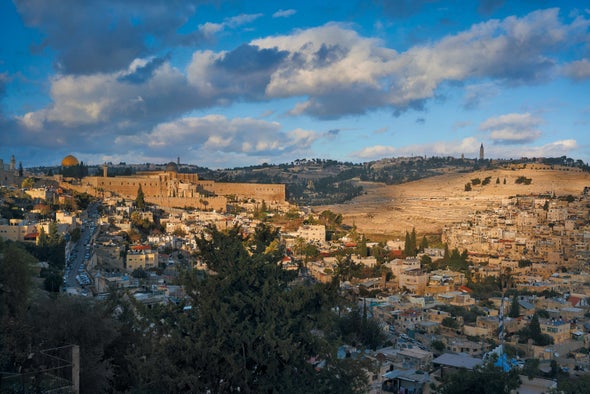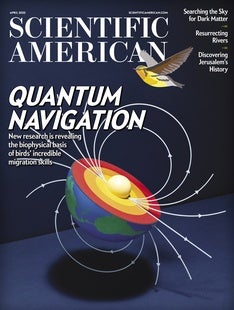Last fall the discovery of a 2,700-year-old toilet made headlines around the world. Its significance had less to do with long-ago plumbing than with the site of its discovery: Jerusalem. No place on Earth has seen so much digging for so long as this ancient Middle Eastern city; on any given day, a dozen or more excavations are underway in what is now a fast-growing metropolis. And no place attracts as much media attention for its archaeological finds, no matter how mundane. Only here would an ancient latrine seize the imaginations of millions.
Since the 1830s treasure hunters, religious enthusiasts and scholars have flocked here to dig into the past of a place billions of people hold sacred. Seeking tombs and riches, the early arrivals created the field of biblical archaeology—the only discipline founded on the idea that the tools of science can bolster rather than undermine traditional faith. In time, they were largely replaced by secular academics who were less devoted to upholding scripture or finding treasure but who nonetheless considered the Bible to be a tool as valuable as their spades.
Yet despite more than a century and a half of study, Jerusalem has largely confounded researchers. Entire eras within its 5,000-year-long archaeological record were missing, from the chapters documenting its early Judean roots to the later periods of Persian, Hellenistic and Arab dominance. Scientists knew little about the health of the city’s inhabitants, what they ate, who they traded with, or how they influenced—and were influenced by—their neighbors.
The major culprit for these gaps in knowledge is the old fixation by archaeologists on Hebrew scripture at the expense of modernizing their approach to reconstructing the past. Only very recently have they adopted techniques such as radiocarbon dating, long considered standard practice by researchers working in other parts of the world. Intent on finding storied remains of the biblical era, they have been slow to undertake the arduous work of sifting through garbage heaps to gain a fuller picture of everyday life millennia ago.
Now Jerusalem scholars are racing to catch up with their colleagues by embracing new analytical methods and goals. Yet 21st-century archaeology in a city shared by three faiths and contested by two peoples is as closely tied to religion and politics as it was in the 19th century—an arrangement that has cast a pall over the science. Excavations in Jerusalem today are firmly under the control of the Israel Antiquities Authority, a government organization that grants no permits to Palestinian teams in the city and only rarely approves them for foreigners. Fundamentalist Christian as well as Jewish groups with overt religious agendas pour money into costly digs. Israeli leaders regularly cite archaeological finds to strengthen their claim to the Holy City, whereas a host of international organizations denounce any excavations—no matter how impeccable the scientific method—in areas considered occupied.
“Truth springs up from the Earth,” according to the part of the Bible that Christians and Jews call the Psalms and that Muslims call the Zabur. But the truth emerging from this city’s past, revealed by the latest analytical techniques, is as complicated by the harsh realities of the present as it was when the first spade struck into the ground. This is what makes Jerusalem a uniquely challenging site for researchers. It is a rare crucible where religion, politics and science meet—sometimes to cooperate and sometimes to collide.
A distinguished American classical scholar named Edward Robinson started the biblical Gold Rush in the 1830s, at the dawn of modern archaeology. Robinson was a devoutly Protestant academic who believed in the Bible’s inerrant truth. While on sabbatical in Germany, he encountered the new fashion of biblical criticism, which sought to apply logic and reason to scripture. Mortified by what he considered to be heretical questioning of the truth contained in the holy text, Robinson wanted to counter this growing tide of religious skepticism and secularism in the West. He would do this, he decided, by using scientific methods to show that the Bible accurately described real-world people, places and events. Armed with the Good Book as his field guide and a thermometer, measuring tape, telescope and three compasses as his tools, he set out for Jerusalem to find what he called “indisputable remains of Jewish antiquity.”
Robinson began by attempting to tie the current-day names of villages, wells and streams in the region around Jerusalem to biblical texts to demonstrate the geographical accuracy of scripture. This marriage of data with faith proved irresistible to Western Christians. The book that he published in 1841 with his collaborator Eli Smith, bearing the weighty title of Biblical Researches in Palestine and the Adjacent Regions, proved an unlikely best seller on both sides of the Atlantic. With it, the men laid the foundation for “an entire new scholarly, religious, and political enterprise in the Holy Land,” writes historian Neil Asher Silberman.
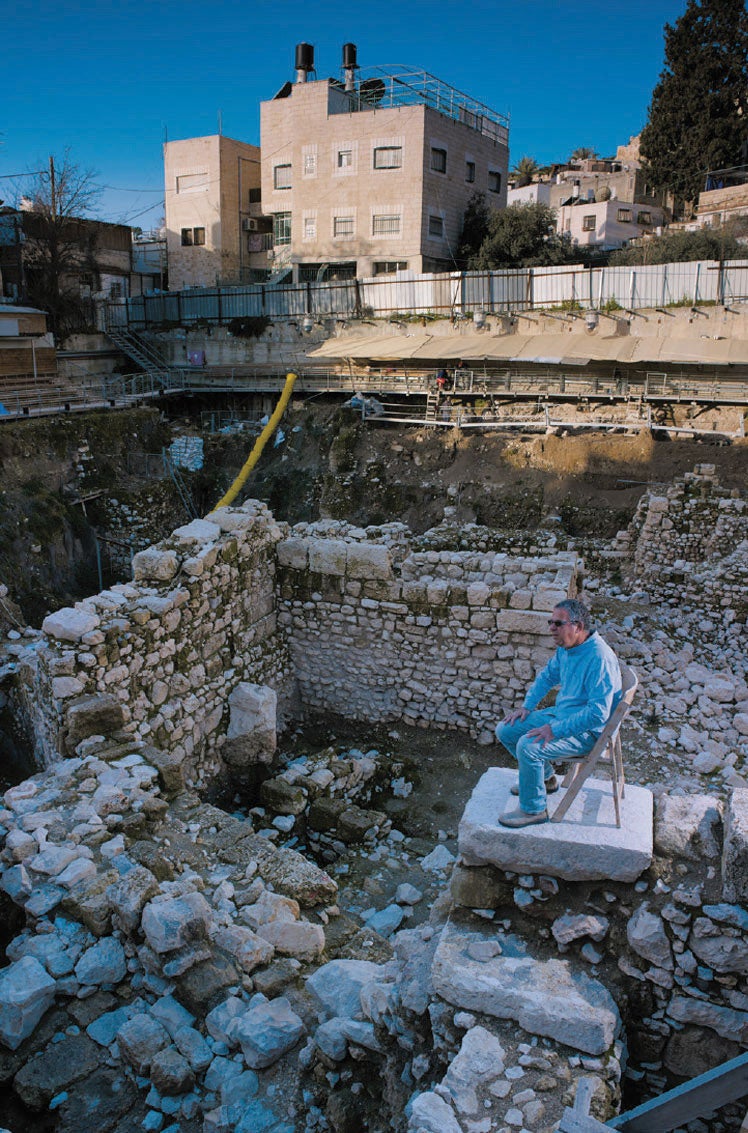
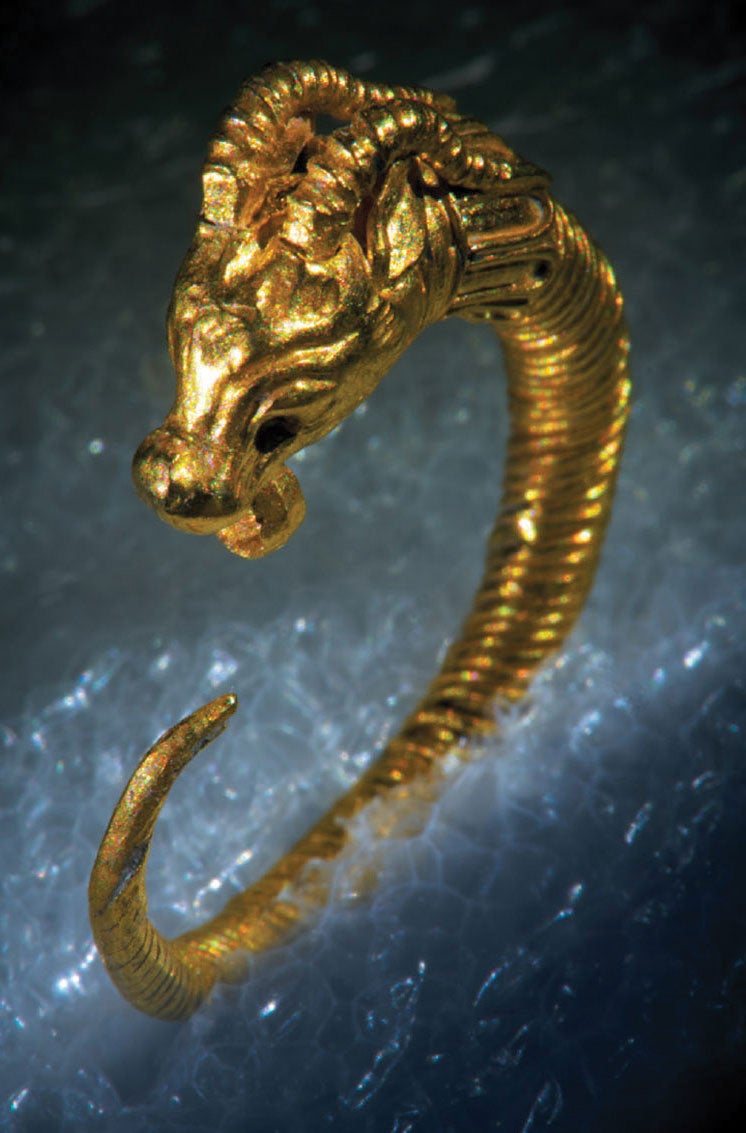
It was an enterprise that would reshape the Middle East. In 1863 the Ottoman sultan in Istanbul, who controlled Jerusalem and the surrounding region of Palestine, granted the city’s first official dig permit to a French explorer and senator. The sultan was interested in neither the Bible nor science but in good relations with the senator’s powerful confidante, Emperor Napoleon III. Soon, British, German and Russian teams gained their own permits and set out to measure, dig and analyze ancient sites across Palestine. This was not just pious poking into the past. The Ottoman Empire covered an immense swath of territory stretching from Eastern Europe to the Horn of Africa, and European powers competed fiercely to influence and dominate it. With its important Christian shrines, Jerusalem provided an easy access point for Europeans eager to gather intelligence and expand their sway within the empire. Diplomats, military officers and spies accompanied the biblical scholars, and many were eager to find treasure as well as expose the past.
Although Jerusalem has existed for 5,000 years, Westerners were focused on what might be called the city’s biblical millennium, the era between the arrival of the Israelites after 1000 B.C.E. and the Roman destruction of C.E. 70, a period encompassing much of the action that takes place in both the Old and New Testaments. They were particularly drawn to the first centuries of Judean control of the city. Overwhelmingly Protestant, these explorers had grown up hearing about David’s palace and Solomon’s temple, as well as sacred and valuable objects associated with Judaism. These included the Ark of the Covenant, a gilded box said to hold the Ten Commandments brought down from Mount Sinai by Israelite leader Moses and reputed to have magical powers. In Jerusalem, the desires for knowledge, wealth and sanctity were hard to untangle.
From the start, excavators faced a unique set of challenges. Unlike many other ancient Middle Eastern sites, Jerusalem is not a layer cake of a mound, with the old remains below and the new above. Instead it was built on and from limestone, the product of a vast shallow sea that covered the region during the age of the dinosaurs. An ideal building material, Jerusalem’s particular variety of limestone is relatively soft when quarried, then hardens and turns golden when left to weather. But complicating matters for archaeologists, a single stone hewn for an ancient Judean dwelling may have been reused by Romans for a temple, collected by Arabs to complete an arch and robbed by Crusaders to build a church. Given the dearth of wood and other organic materials used in construction, modern dating methods such as dendrochronology and radiocarbon, which rely on such materials, can be of limited use for determining when any given structure was built—and by whom.
The unstable nature of the ground itself poses further difficulties for investigators. Naturally crumbly, limestone landscapes harbor subterranean caves and streams. In Jerusalem, millennia of quarrying and destruction have left behind tons of small chips. What seems like solid rock is actually a gravelly sediment called shingle that can turn liquid in an instant. “The shingle would suddenly burst in like water, burying our tools and sometimes partially our workmen,” one British excavator complained in the 1860s. Archaeologists have been complaining ever since. As recently as 2018, a collapse brought down tons of rocky debris at one archaeological dig.
And then there are the threats from above. Unlike ancient sites such as Babylon in Iraq, Jerusalem remains a living city crammed with shrines that draw a constant stream of Jewish, Christian and Muslim pilgrims. Simply digging a hole can be viewed as an act of disrespect or outright aggression. When the French senator conducted the first legal excavation at a Jewish tomb there in 1863, there was an outcry in Jewish communities around the world. A few years later Muslims worried that British digs aimed to undermine the walls holding up the city’s acropolis, what Jews call the Temple Mount and Muslims call the Haram al-Sharif. (This wasn’t as outlandish a fear as it might sound, given that the expedition leader was using gunpowder to blast his way through the rock below.)
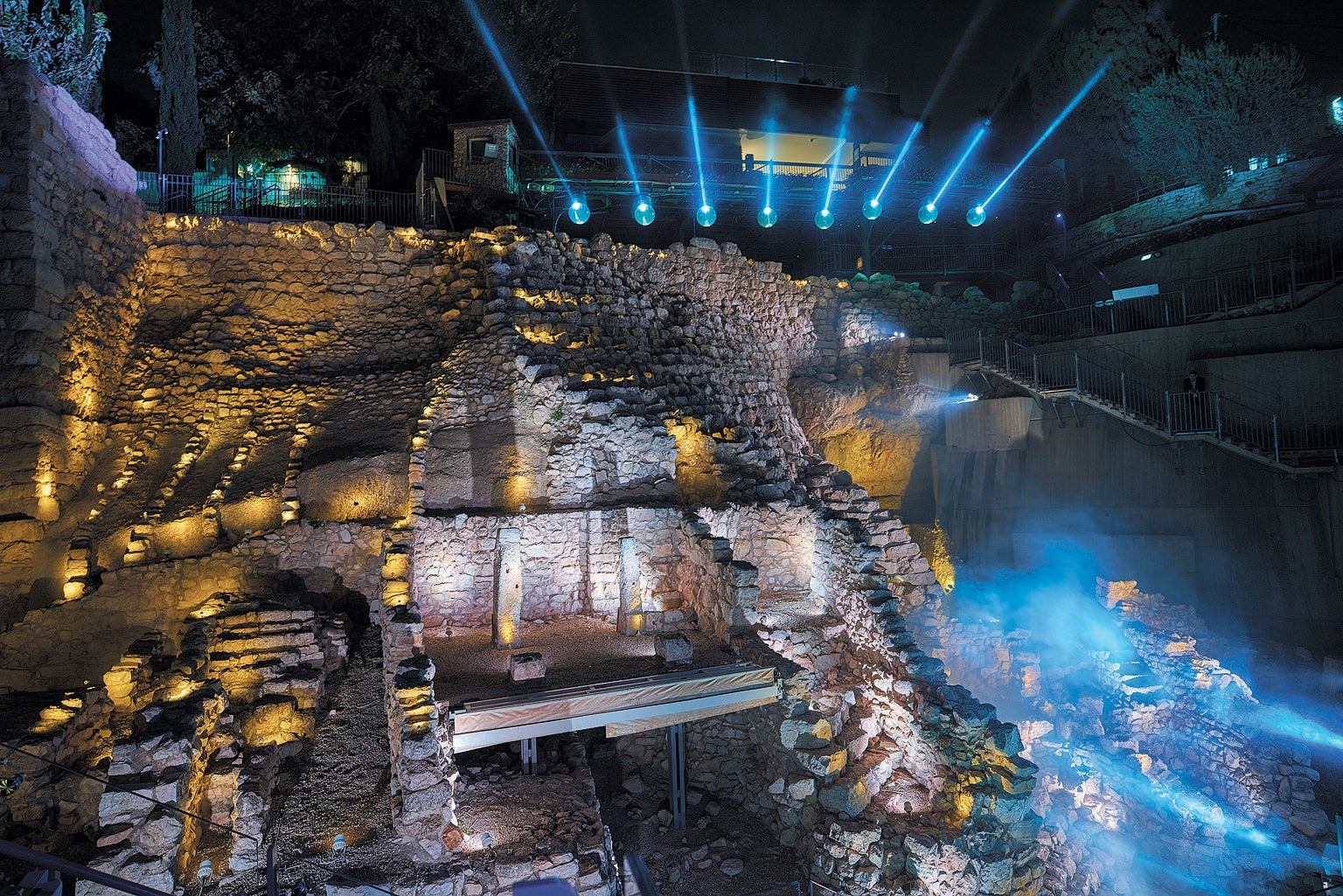
Ever since, excavations there have periodically prompted demonstrations, sparked bloody riots and set off international crises, with participants getting assaulted and chased by mobs. Archaeology in Jerusalem is not for the faint of heart.
At the end of World War I, Ottoman rule gave way to control by the British, who in turn relinquished Palestine in 1948, leaving behind warring Jewish and Arab factions to battle for command of the region. In the aftermath, the new state of Israel’s capital was in West Jerusalem. Jordanian forces controlled East Jerusalem, which included the Old City and most of the ancient sites and shrines. The power structures changed again in the Six-Day War of 1967, when Israel conquered East Jerusalem and incorporated it into its capital, although most nations still consider this area occupied territory.
For the first time, Jewish Israelis had a chance to probe underneath the city even as they reshaped it above. Unlike Robinson and his mostly Christian successors, this new generation of biblical archaeologists was overwhelmingly made up of agnostics and atheists with little interest in proving the truth of scripture. But they were also nationalists fascinated by the Jewish past and viewed the Bible as a foundational text of their new homeland. Benjamin Mazar, a famous archaeologist and president of Hebrew University in Jerusalem, was unapologetic about their bias. “Biblical archaeology was part of Zionist idealism,” he said in a 1984 interview in Biblical Archaeology Review.
Mazar and his colleagues found luxurious villas, grand avenues and even the ancient world’s most impressive pedestrian overpass, all dating to the era of King Herod the Great and his successors, who ruled Judea under Rome’s authority in the century before and during the time of Jesus. When an internal civil war turned into an uprising against the empire, Roman legions destroyed Jerusalem in C.E. 70. These discoveries electrified the Jewish public by bringing to light physical evidence of the time when it was a famous and prosperous Jewish city. “Israeli archaeologists, professional and amateurs, are not merely digging for knowledge and objects, but for the reassurance of roots,” wrote Israeli author Amos Elon in 1971. The finds also drew the attention of Israeli politicians, who were quick to cite the physical evidence to bolster their controversial claim to the Holy City.
Palestinians decried such excavations as twisting science for political purposes, favoring the Jewish past at the expense of the city’s ancient Canaanite and later Christian and Muslim heritage. “We were put in the freezer for 2,000 years,” says Nazmi Al Jubeh, a Palestinian archaeologist at Birzeit University, referring to the lack of emphasis on the two millennia following the Roman destruction. There were important exceptions, such as when Israeli archaeologist Meir Ben-Dov uncovered half a dozen huge palaces dated to the seventh century C.E., shortly after the arrival of Arab Muslims in the city, and the discovery of a major and long-lost Byzantine Christian church. Yet there is no disputing that the Jerusalem digs in the decade following the Six-Day War—and the media coverage accompanying the resulting finds—were weighted heavily to the Jewish past.
Meanwhile archaeologists in Europe and North America were embracing new research methods and technological advances. Rather than focusing on unearthing monumental buildings, museum-quality artifacts and evidence of long-dead kings, these excavators sought to know more about how ordinary people lived, what trade routes tied disparate peoples together and what shifts in material culture revealed about societal changes. Using new techniques, researchers could be far more precise in dating artifacts, and by sifting carefully through dirt, they could produce samples that cast light on diet, disease, commerce and ritual.
Researchers in Jerusalem remained deeply conservative in their approach to studying the past, however. The continued quest to find the city conquered by the Bible’s King David and glorified by his son King Solomon after 1000 B.C.E.—still missing after more than a century of digging—took precedence over questions about diet and disease. Even those archaeological techniques in wide use elsewhere met with suspicion. Carbon 14 dating, for instance, was dismissed out of hand by researchers who contended that its margin of error allowed one to argue that the age of any given find was whatever one wanted it to be.
The matter came to a head in the 1990s, when Tel Aviv University archaeologist Israel Finkelstein attacked academic and biblical assumptions about the ages of sites around Israel, including Jerusalem. After analyzing pottery from around the region, he concluded that the archaeological “clock” previously used to date those materials was off by a century. That meant buildings dated to 950 B.C.E. actually were built around 850 B.C.E. This might seem an academic detail, but the implications were dramatic. Indeed, they stood to “change the entire understanding of the history of Israel,” Finkelstein wrote.
The most dramatic implication was that Jerusalem had never been the large and glorious center of a brief empire ruled by a fabulously wealthy King Solomon, as detailed in the Bible. Although David and his famous son may have existed, Finkelstein and a growing number of scholars saw them instead more akin to tribal chieftains of a hilltop town.
This claim infuriated many of the more traditional excavators, including Mazar’s granddaughter, the late Eilat Mazar. Like Robinson in the 1830s, she set out to counter what she saw as a kind of heresy. In 2005, while digging on the eastern side of a rocky spur of land south of the city’s acropolis, Mazar uncovered what she claimed was probably the palace of King David. Finkelstein and others countered that her dating was faulty and that the structure might have been built by Canaanites—a mix of ethnic groups who inhabited the Levant 3,000 years ago—long before David was supposed to have lived.
Few were persuaded by Mazar’s interpretation, but the dispute had the effect of radically altering the way archaeologists in Jerusalem conducted fieldwork. The battle over the city’s past shifted from interpreting biblical passages to arguing over hard data. Excavators began to sift through each bucket of dirt, meticulously counting fish bones, parsing seeds, and probing for tiny bits of clay that might have been stamped with an administrative seal that could reveal clues to the nature of trade and governance. At Tel Aviv University, Finkelstein pushed to set up facilities that could handle an array of archaeological analyses, from determining the nature of the residue in the bottom of a cup to studying latrine samples to understand what illnesses plagued inhabitants.
The showcase of that transformation is best seen at a former parking lot, located on the western side of the rocky spur of ridge where Mazar dug up her building. “The archaeological sciences are important tools that have been completely underused here in Jerusalem,” Tel Aviv’s Yuval Gadot says. Since 2017 he and Yiftah Shalev of the Israel Antiquities Authority have been busy working their way down through a city block–sized site that contains a rare cross section of Jerusalem from the sixth century B.C.E. until the first centuries of Arab Muslim control a millennium later.
In one case, the excavators used a novel technique that charts changes in Earth’s geomagnetic field to determine the intensity and speed of destruction of some of the site’s key structures. This approach demonstrated that the burning and collapse of a major administrative building from the sixth century B.C.E. was sudden, rather than the result of small conflagrations and decay. The evidence of this dramatic event clearly aligns with the destruction of the Judean city by Babylonian forces in 586 B.C.E., described in detail in the Bible.
Yet until recently, researchers’ understanding of what took place in Jerusalem in the subsequent four centuries came almost entirely from scripture because archaeologists had failed to find much beyond a handful of potsherds from this time. That period extended from the rule of the Persian Empire—which conquered the Babylonians—to the Hellenistic successors of Alexander the Great, who in turn swallowed the Persian regime.
By applying modern archaeological research methods, the parking lot team has illuminated this largely unknown period. Meticulous sifting of the excavated sediments, for example, revealed the presence of tiny bat bones in the debris of the destroyed building, showing that the site was abandoned for a time before refugees crept back. The team also discovered that both before and after the 586 B.C.E. calamity, Judeans were importing fish from the Nile. Those imports fell off much later, probably because warfare between competing Hellenistic kingdoms following the death of Alexander the Great in the fourth century B.C.E. disrupted trade links.
This level of detail was wholly missing from previous biblical archaeology. “When you can have a good control of stratigraphy, you can start dealing with food habits and things like this,” Gadot says. “Now we can excavate a home, analyze a family’s food habits and understand their connection with the wider world.”
Biblical texts also paint an image of Judeans in this long era turning inward, focusing on their temple cult that revolved around a monotheistic deity and embracing strict dietary rules, as well as taboos on animal and human images. But analysis of artifacts from the parking lot paints a more nuanced picture. Boxwood from distant Anatolia showed that the city’s trade links were quite extensive. And one Persian-period vessel with the face of an Egyptian deity, presumed to be an import brought by an Egyptian or Phoenician merchant, turned out to be fabricated in or near Jerusalem—a sign that non-Judeans made their home in the city and brought their own traditions with them.
Nor are dietary taboos as defining of Judeans as scholars once thought. A June 2021 paper in Near Eastern Archaeology detailed the discovery of an entire pig skeleton in what appears to be a Judean home, not far from the city’s acropolis that once supported the Jewish temple. The researchers concluded that not only was pork consumed in the heart of the city but that “pigs were raised for this purpose in the capital of Judah.” And although the parking lot dig is focused heavily on biblical times, researchers there also are studying a Roman and Byzantine villa and taking samples from an eighth-century C.E. Arab latrine to determine the nature of parasites that debilitated inhabitants.
The new science-heavy approach to archaeology means that less of the work is done in the trenches and more is done in labs such as those in the basement of Tel Aviv’s archaeology department building. This effort is also far more international than in the past, when the vast bulk of team members were Israeli Jews. Now American and European graduate students participate in the investigations in larger numbers, providing Israeli researchers with important links to the outside world. Israeli archaeologists also have partnered with the country’s Weizmann Institute of Science in Rehovot to gather large numbers of radiocarbon samples to calibrate a more accurate chronology of Jerusalem’s past.
But the upgrade to Jerusalem archaeology does little to change the controversy that accompanies every dig in and around the Old City. The parking lot effort prompted angry Arab homeowners to take the project to court amid charges that the excavation was endangering their homes that loom along two sides of the deep pit. And the pit itself will serve as the basement of a massive visitor’s center owned and operated by a controversial right-wing Jewish organization dedicated to settling more Jews in the area. “The whole use of archaeology as a legitimizer of the state has become a hallmark of Netanyahu,” says Tel Aviv’s Raphael Greenberg, referring to the former long-reigning Israeli prime minister.
Gadot insists that “Jerusalem should be explored just like Athens and Rome.” But unlike those two ancient capitals, this one remains at the heart of one of the world’s most challenging—and violent—predicaments. Science-based archaeology may have arrived to stay, but the religion and politics that are part and parcel of any major excavation here remain largely unchanged. “No amount of sieving, sherd counting, text criticism or ancient DNA analysis can alter that equation,” Greenberg says.
Last May, Eilat Mazar passed away, but the Bible continues to exert an enormous influence over excavations in Jerusalem and across Israel. As the recent toilet discovery demonstrates, any find related to Jerusalem’s biblical millennium is sure to make its way into Israeli newspapers and Web sites and often into American and European outlets. This coverage, in turn, can elicit vital donations for excavations that are, particularly in Jerusalem, often complicated and expensive endeavors. Much of the support for Mazar’s digs, for example, came from a New York Jewish philanthropist and an unaccredited Christian college in Oklahoma.
With Mazar’s passing, Hebrew University’s Yosef Garfinkel is taking up her biblical standard. Six weeks before Mazar’s death, she called him to her bedside and asked him to continue her excavations at the City of David National Park where she found her putative palace. He remains unconvinced that she clinched her case but hopes to find the necessary evidence by restarting the dig in the near future.
Garfinkel just completed a series of excavations outside the city that he says uncovered Judean settlements dating to not long after 1000 B.C.E. “We found the historical kingdom of King David,” he insists. “It had fortified cities, writing and administration.” Finkelstein, for one, is unimpressed, noting that the settlements survived only a few decades and reveal nothing directly about the size or status of Jerusalem itself. In recent years he and his opponents had narrowed their differences over the dating of key sites in and around Jerusalem down to a few decades, but Garfinkel’s work has revived the old fight over what the city looked like when the Israelites arrived.
The resurgence of what Finkelstein sees as a traditional form of biblical archaeology leaves him troubled. He wants to put Jerusalem in the wider context of a fluid ancient Middle East and set aside the fixation on proving the existence of this or that monarch. But “the wave of conservative scholarship is becoming stronger and stronger,” he says. “It is not just Eilat Mazar and Yosi Garfinkel. It is quite depressing. We are losing the battle.”
To combat this trend, Finkelstein launched a new archaeology program at the University of Haifa last fall that will emphasize cutting-edge science, international collaboration and museum studies with its own deep-pocketed supporters. “But of course,” he adds, “the battle is bigger than archaeology.” Israel, like the U.S., is an increasingly polarized place, and those divisions are reflected in research as well as in politics. Demonstrating the accuracy of the Bible is not simply a matter of academic debate but part of a larger culture war.
Palestinians remain largely on the sidelines. Al Jubeh, the Birzeit University archaeologist, pins the ultimate blame for their marginalization not on Jewish Zionists but on Western Christians such as Robinson who were obsessed with the Old Testament. As a result, “Jerusalem is the most excavated site in the world, and it has come to tell an Israeli story,” he says. “I think in the end, however, there is only one narrative—the narrative of science.”
In a world of alternative facts, it’s a comforting thought. Yet separating science from the conflicts that cleave this city is clearly a task of biblical proportions.
